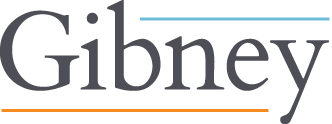The August 2023 Visa Bulletin has been released. Sustained demand for too few immigrant visas continues to have an adverse impact on foreign nationals and their U.S. employers.
Highlights from the August 2023 Bulletin include:
- Establishment of a cut-off date for EB-1 Worldwide, Mexico and the Philippines
- Retrogression of more than a decade for EB-1 India
- Further retrogression for EB-3 Worldwide, Mexico and the Philippines.
- USCIS confirmedthat it will follow the Final Action Dates chart for purposes of eligibility to file an Adjustment of Status application.
EMPLOYMENT-BASED (EB) PRIORITY DATE SUMMARY FOR FINAL ACTION DATES
The Final Action Dates are as follows:
EB-1, First Preference Category
- EB-1 Worldwide (including El Salvador, Guatemala and Honduras, Mexico, and Philippines) now has a cut-off date of August 1, 2023.
- EB-1 China’s cut-off date held steady at February 1, 2022
- EB-1 India retrogressed more than 10 years, to January 1, 2012.
EB-2, Second Preference Category
- EB-2 Worldwide (including El Salvador, Guatemala and Honduras, Mexico, and Philippines) Final Action Date advanced to April 1, 2022.
- EB-2 China: Final Action Date holds steady at June 8, 2019.
- EB-2 India: Final Action Date holds steady at January 1, 2011.
EB-3, Third Preference Category (Professional and Skilled Workers)
- EB-3 Worldwide (including El Salvador, Guatemala and Honduras, Mexico, and Philippines) retrogressed further to May 1, 2020.
- EB-3 China: Final Action Date advanced one month to June 1, 2019.
- EB-3 India: Final Action Date held steady at January 1, 2009.
EB-5, Fifth Preference Category (Immigrant Investors)
- For the EB-5 Unreserved categories (C5, T5, I5, and R5), India and China maintain a cutoff date of April 1, 2017 and September 8, 2015, respectively. All other countries will remain current.
- The EB-5 “Set-Aside” categories (Rural, High Unemployment, and Infrastructure) will remain current.
Individuals with a priority date that is either “current” or before the published cut-off date may file an adjustment of status application based on the dates outlined above.
WHAT SHOULD EMPLOYERS EXPECT?
Retrogression is unlikely to improve for the remainder of the fiscal year as the limited annual supply of immigrant visa dwindles.
Due to continued use and high demand, the Department of State established a cut-off date for EB-1 Worldwide. While further adjustments may be made in September, the State Department predicts that EB-1 Worldwide will return to “Current” with the start of the new fiscal year in October.
Because the EB-1 Worldwide demand for FY 2023 is now greater than the number of visas remaining and available, EB-1 India can no longer received unused numbers from the Worldwide category. Due to per country quotas, India has reached the FY 2023 limit. The EB-1 India cut-off date of January 1, 2012 reflects the oldest priority date of an EB-1 applicant. The State Department expects that with the new fiscal year in October, the EB-1 India final action date should advance to at least the final action date in the July Visa Bulletin (February 1, 2022). However, this will depend in part on demand for EB-1 visas by Indian applicants.
Further retrogression this month for EB-3 Worldwide reflects sustained demand since cut-off dates were put in place in May 2023.
As demand keeps pace with predictions, the ability to file Adjustment of Status applications for employees will continue to be more difficult through the end of the fiscal year. Employers should contact immigration counsel to identify foreign nationals who are eligible to file Adjustment of Status applications in August, as further retrogression is possible for September.
For additional information, please contact your designated Gibney representative or email info@gibney.com.

